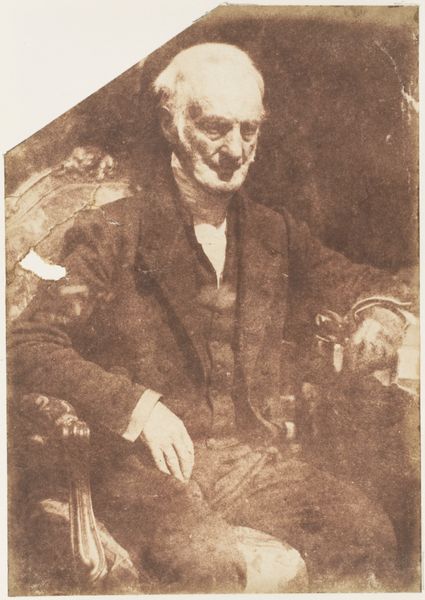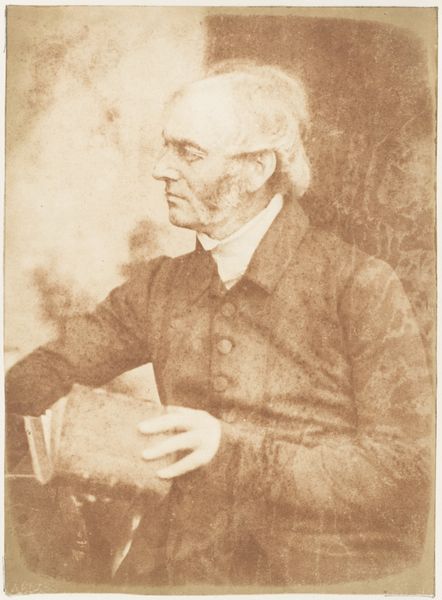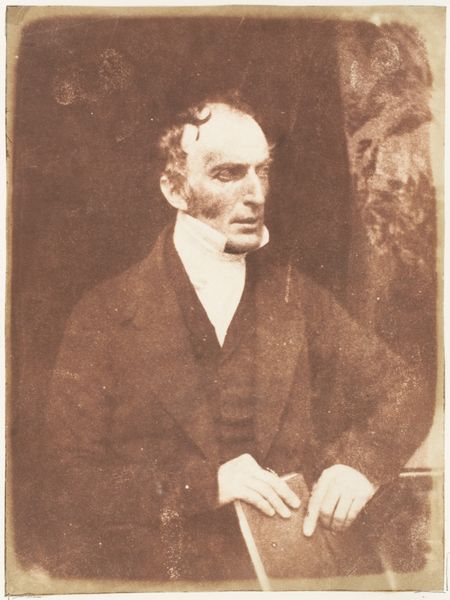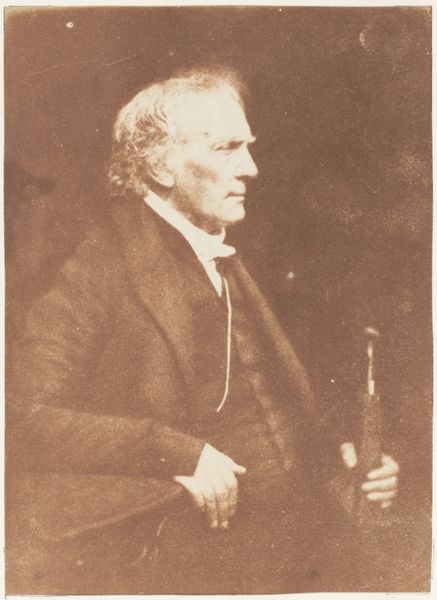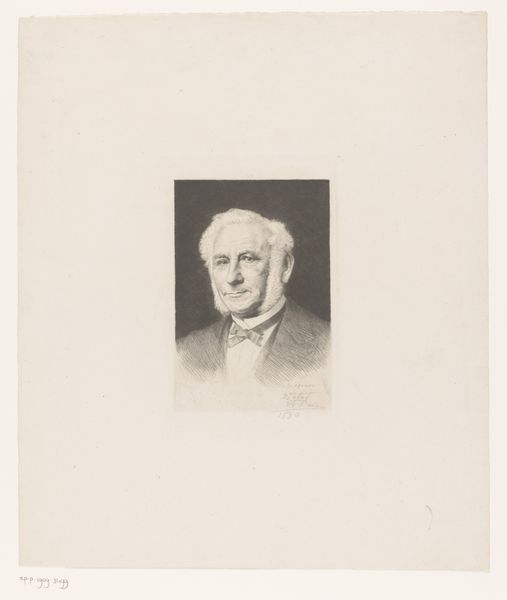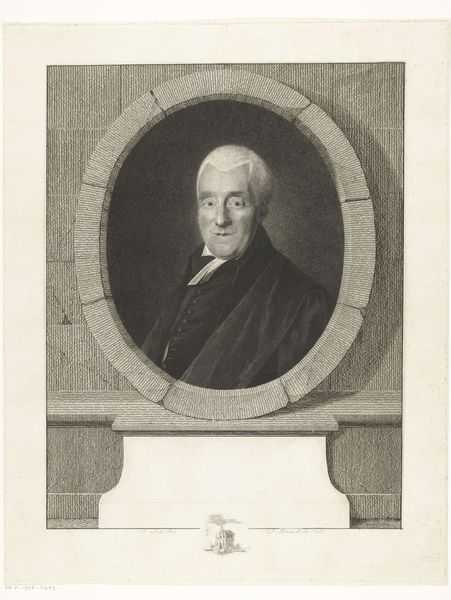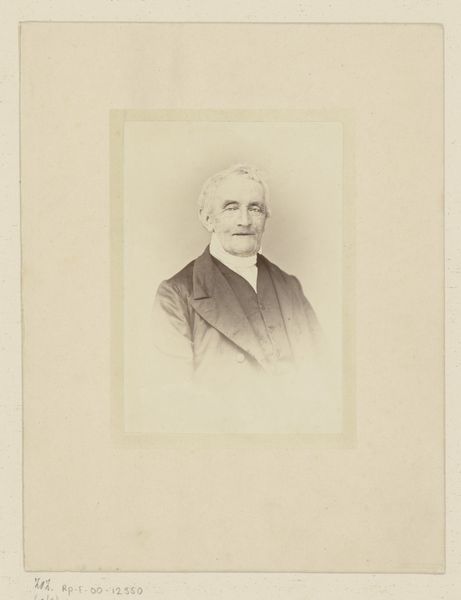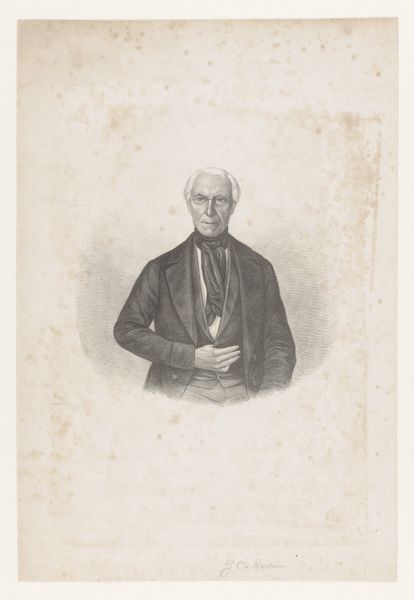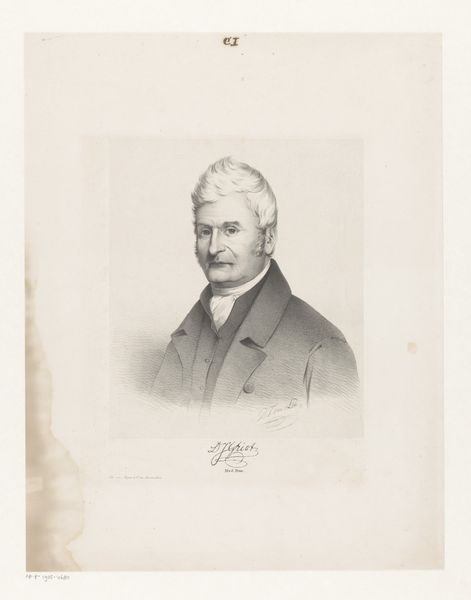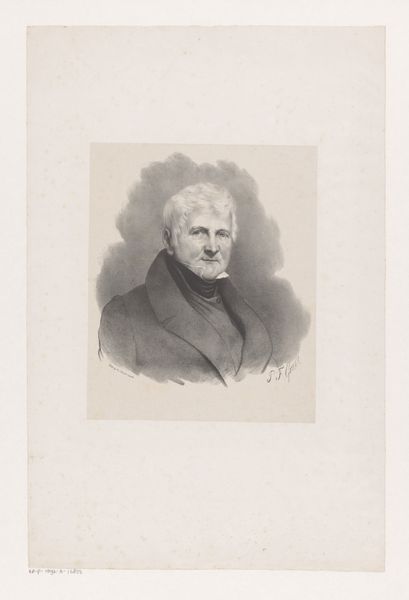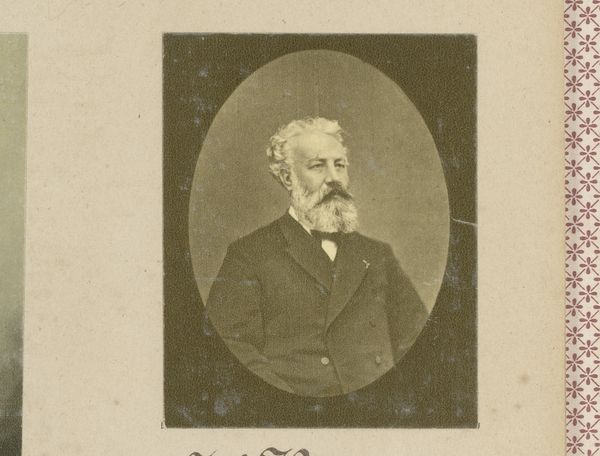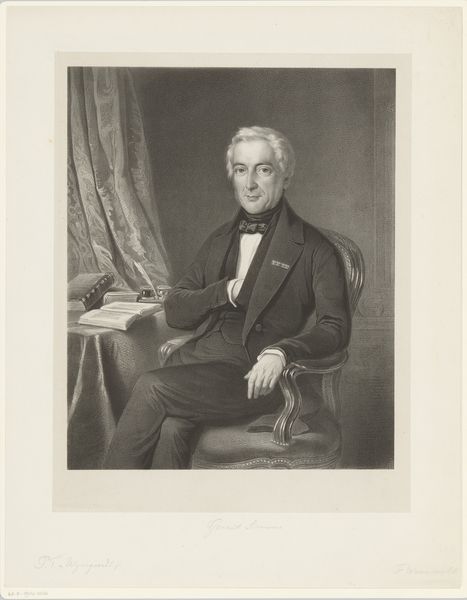
#
portrait
#
facial expression drawing
#
charcoal drawing
#
portrait reference
#
portrait head and shoulder
#
men
#
animal drawing portrait
#
portrait drawing
#
portrait art
#
fine art portrait
#
celebrity portrait
#
digital portrait
Copyright: Public Domain
Curator: Standing before us is “Dr. MacCulloch of Kelso and Greenock,” a photograph crafted between 1843 and 1847 by the pioneering Scottish duo, Hill and Adamson. Editor: It's immediately striking how substantial and imposing this man seems, yet the tones are all quite muted and earthy. What kind of process would have been employed to achieve such an effect? Curator: This is very likely a calotype, an early photographic process using paper negatives. What we’re seeing is a significant step in photography's move from novelty to a viable medium for portraiture. Its development allowed more widespread access to image making. Editor: So, the materiality is quite important here. This wouldn't have been the clean, sharp image that the daguerreotype offered, correct? I’m interested in the implications for representation. Was the aesthetic an artistic choice, or tied to the laborious process of image creation at the time? Curator: A bit of both, really. The slightly blurred aesthetic and limited tonal range were characteristics of the calotype, but Hill and Adamson turned those constraints into an expressive style. Think of it, access to these materials had far reaching impacts within burgeoning social movements. This likeness democratized portraiture for academics. Editor: Right, he holds a thick book rather firmly, but with such delicately mottled hands! There’s a real sense of both the physical labor involved in knowledge and intellectual weight in the pose itself. But given photography's increasingly ubiquitous role in society at that time, can we say its impact on the traditional authority of the painted portrait helped shift society toward wider cultural participation? Curator: Absolutely, but its role at that time was more immediate. Think of photography's application during social shifts in 1840s Scotland, a powerful tool during movements like the Disruption, influencing opinion and preserving pivotal figures from a period of major social change. Editor: It makes me consider the socio-political impact this emerging art form might have posed. A single man's portrait speaking to larger issues within society; interesting food for thought indeed. Curator: Exactly. It's a confluence of science, art, and social change, isn't it? Editor: A fitting tribute to those blurred boundaries and a telling glimpse into a past.
Comments
No comments
Be the first to comment and join the conversation on the ultimate creative platform.
